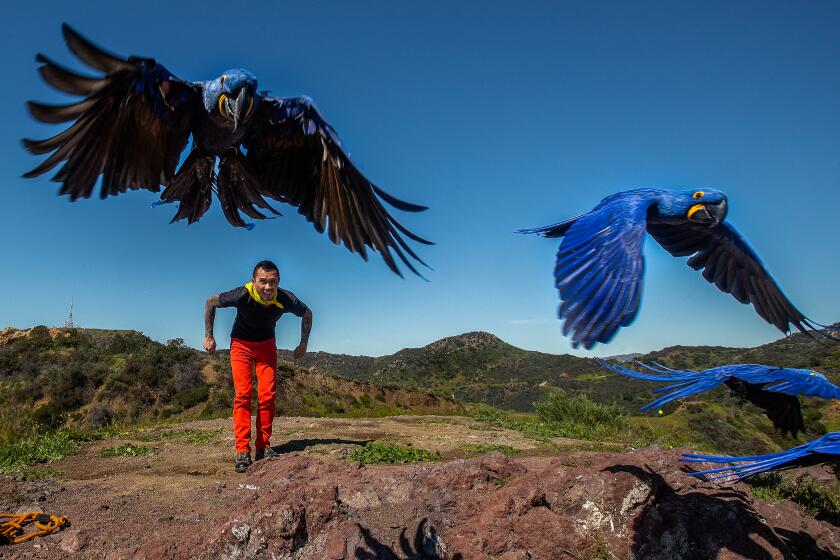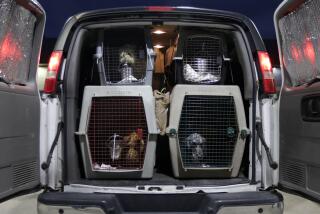Spate of exotic bird thefts leaves SoCal parrot lovers on edge
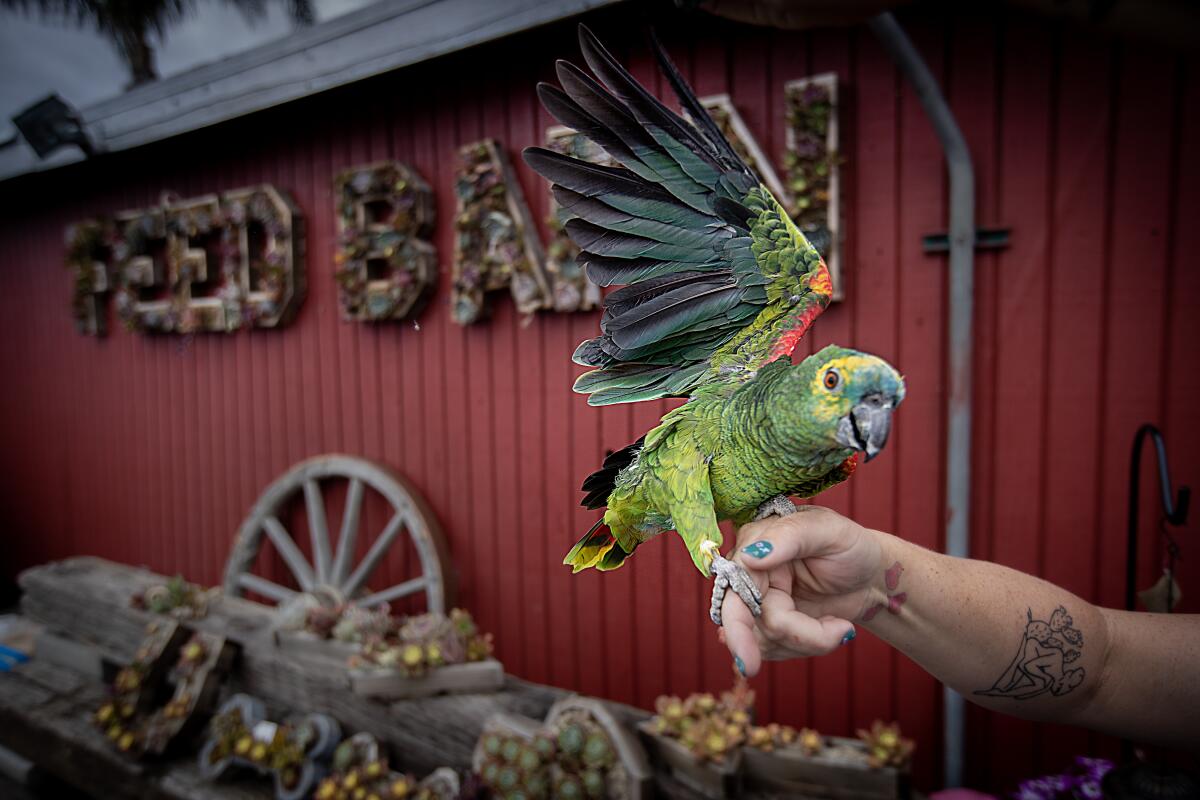
Michelle Martin has done most everything she can think of to find the treasured parrots callously stolen from her Orange County feed store late last year, their feathers left scattered across the shop floor.
She’s contacted people from Craigslist selling birds that resemble Cody, a double yellow-headed Amazon, Baby Love, an umbrella cockatoo, and Sweetie, a Congo African gray, only to meet with disappointment. She’s lost hundreds of dollars to scammers who have reached out on social media, avowing they knew the birds’ location and would share it for a price. She’s scoured swap meets that feature exotic birds, but again, to no avail.
She even consulted a pet psychic who professed to sense their presence in a neighborhood near the Mexico border, but decided it was too risky to go knocking on doors on her own.
The December break-in at Martin’s Feed Barn store in Dana Point was one of several parrot thefts in Southern California in recent months. The feathered creatures, which can retail for as much as $6,000 depending on the breed, have been stolen from pet stores, porches, even a veterinarian’s office.
Many of the thefts have an eerie similarity.
In the Feed Barn caper, security cameras captured two people shrouded in surgical masks and hooded sweatshirts smashing their way in and making a beeline for Cody, Baby Love and Sweetie. The bandits tore the birds from their cages, stuffed them into backpacks and fled.
Alerted by the shop’s manager, Martin rushed to the store the next morning, still in her pajamas, only to find their empty cages and telltale feathers.
“There’s a special place in hell for people that steal animals,” Martin said.
In February, about two months after Martin’s birds were taken, another break-in unfolded 90 miles north in Calabasas. Security footage captured two thieves busting through the glass door of the All Animals Veterinary Hospital and making off with five parrots that they crammed into backpacks.
In March, thieves hit another Los Angeles-area store, Birds & More, in suburban Lawndale.
Owner Karen Allen, known by her nickname “The Parrot Lady,” said it was her first parrot theft in five decades of operating her shop. Burglars pried open the door just before 11 p.m. and went straight to the cages where her most valuable birds were sleeping.
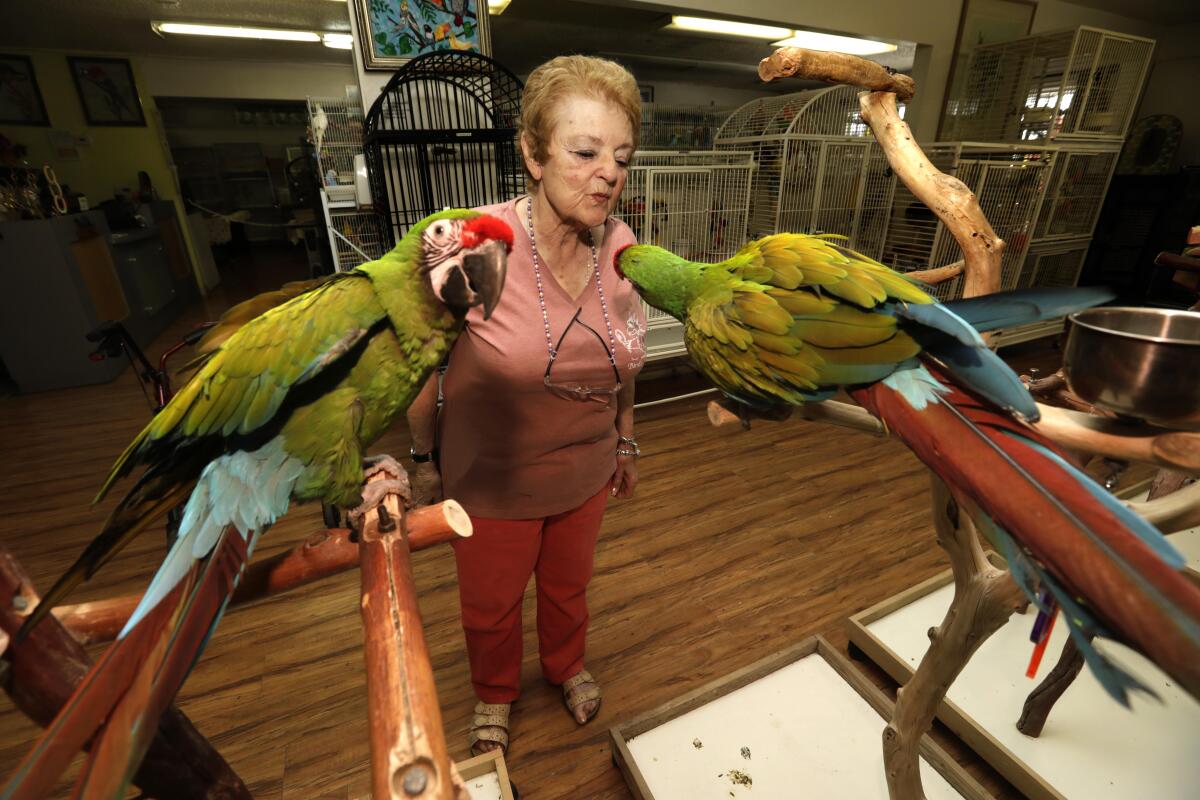
They took two African grays that Allen had hand-fed as babies and was planning to sell. They also stole Ruffle, an elderly double yellow-headed Amazon that belongs to a woman who was temporarily boarding the bird at Allen’s store.
“She’s lost her baby,” Allen said. “You know, this was her feathery kid. It’s just heart-wrenching.”
The cages were padlocked, a measure to keep the birds from figuring out how to unlatch their enclosures and escape. Clever parrots can figure out even the most sophisticated door closure mechanisms within a few days, she said.
The thieves, wearing protective gloves, bent back the doors of the steel cages just enough to slide the birds out. They were gone in minutes.
Allen suspects the burglars had visited the store and knew where the African grays were located. And their use of gloves suggests they also know birds: Although hand-fed parrots are more docile than their wild counterparts, sticking one’s hand in an unsuspecting bird’s cage can result in a painful bite.
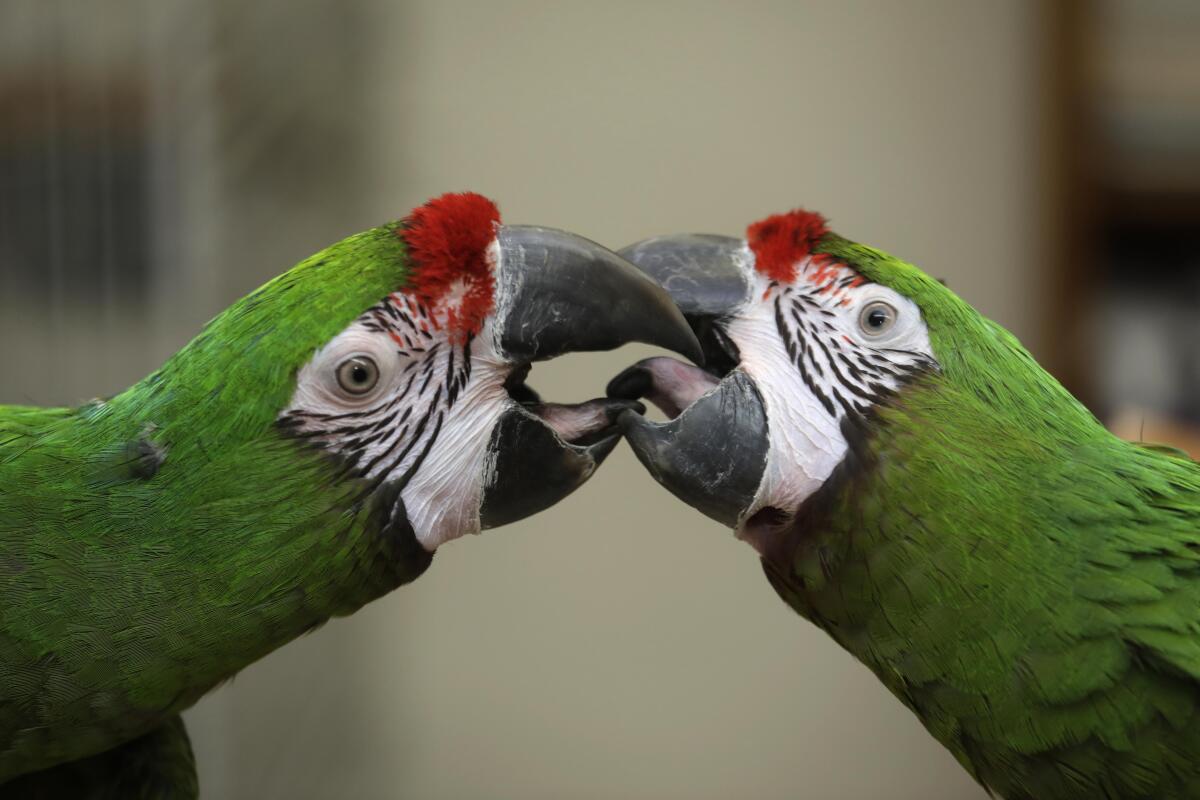
Several bird devotees said the rise in parrot thefts is a reflection of their rising price and popularity — and the potential to profit off black market sales.
“In the 2000s you could buy a hand-fed African gray parrot for $1,500 and now they’re over $6,000,” said Dr. Teresa Micco, a veterinarian who treats birds at Point Vicente Animal Hospital in Rancho Palos Verdes. “So there’s this draw for people who want to steal because they can turn around and sell the birds for several thousand dollars.”
The price increase stems not only from inflation but also a decline in the number of exotic birds for sale. Many longtime breeders have retired and have not been readily replaced because of the time and commitment needed to raise baby parrots.
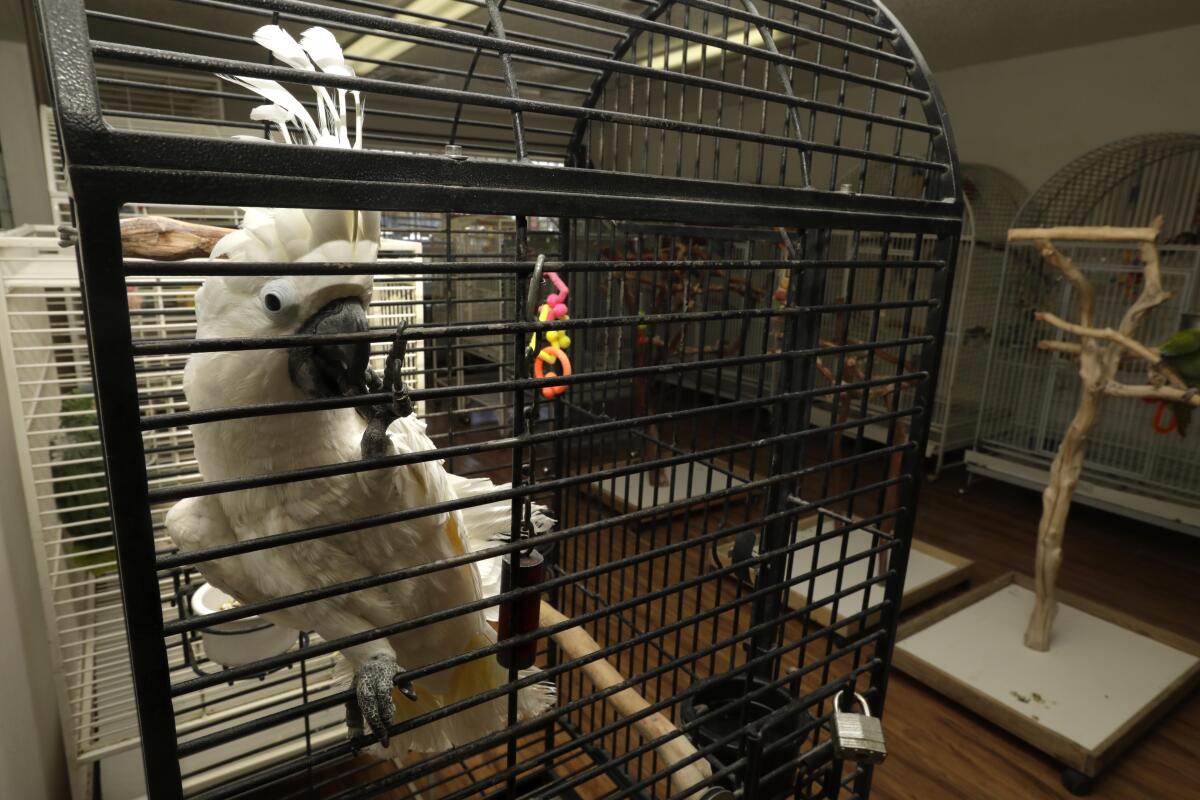
Breeding has also become more challenging. In past decades, breeders would pair up wild birds who had experience reproducing, but in 1992 Congress passed the Wild Bird Conservation Act, which banned exotic bird imports except under limited circumstances. The birds now reproducing are generally domesticated and don’t have more experienced birds to guide them through the process.
Parrots aren’t the only pricey companions in the crosshairs of pet thieves in recent years. Valuable dog breeds such as French bulldogs — purebred puppies can retail for upward of $3,000 — are common targets. Two years ago, Lady Gaga’s dog walker was shot and her two French bulldogs, Koji and Gustav, abducted in a notoriously violent attack on a sidewalk in Hollywood. The dogs were ultimately returned and five people were charged in the crime — including the woman who returned the dogs in hopes of collecting the singer’s offer of a $500,000 reward.
The mystery over Lady Gaga’s stolen French bulldogs and attack on her dog walker deepened even after the dogs were safely recovered.
But birds have long been a symbol of style and wealth in the U.S. Their vividly colored feathers and intelligence are a draw to those seeking a less conventional pet than a dog or cat. Because of their long lifespans — some breeds can live more than 50 years — they’re frequently passed down to their owners’ children or grandchildren.
In the 1980s and ‘90s, macaws, with their gravelly squawks, were all the rage. The draw for many owners, at least initially, centered on aesthetics: The birds were coveted for vibrant feathers that often served as a bright complement to home décor. “If a person could afford a hyacinth macaw, it was like a status symbol,” Micco said.
But over time, she said, “people started realizing these birds are just amazing and they’re intelligent.”
African grays, such as Martin’s Sweetie, have a vast vocabulary and are said to have the mental reasoning of a 3-year-old child. Sweetie could do a spot-on impression of a trash truck, and would dazzle Feed Barn customers by whistling the theme song from “The Addams Family” or the musical score to “The Bridge on the River Kwai.” The cheeky bird would flatter passersby with a well-timed wolf whistle, Martin said.
Other birds can mimic a phone ringing or a dog barking, and some curse like sailors. Parrots can be standoffish — or sweet. Most are wryly amusing in their own way.
Martin likens them to opinionated toddlers who never grow up. The birds tend to develop deep bonds with their owners, and that’s a good thing, Martin says, because you have to keep a close eye on them. Much like an unsupervised toddler, “If it’s quiet, chances are he’s eating your baseboards or chewing on a cord,” she joked.
Micco, the vet, also owns parrots. She recounted how she would regularly greet an African gray named Waldo with, “Are you handsome?” — until he apparently took offense at the focus on his looks. “After two years of asking him if he was handsome, he looked at me and said ‘smart,’ ” she said, laughing. “I still don’t know where he got that.”
With a brain about the size of a walnut, parrots are highly intelligent. They live in flocks in the wild, and can become bored and isolated in captivity without stimulation. Their need for companionship was one reason Martin opted to keep her birds at the feed store, where she spends much of her time.
Chan Quach flies his macaws in L.A. parks, rides his bike with them and takes them out to eat. It’s all part of his mission to make L.A. love birds.
Parrot snatchers aren’t just targeting businesses.
Luna, an African gray, was soaking up afternoon sun on the front porch of her family’s home in Santa Ana in March when she was stolen. Security camera footage showed a man rolling Luna’s large metal cage off the porch and shoving it into the back of an SUV. Luna flapped wildly as he rushed off with her.
Her family was distraught, said Santa Ana Police Sgt. Maria Lopez, and investigators initially weren’t sure where to focus their search. They got a break when an officer charged with checking in with people on probation recognized a probationer as the suspect caught on video. Authorities searched his home, found Luna and reunited her with her owners.
Stories like Luna’s give some hope to those who have lost their birds.
On a recent day inside Birds & More, Allen fawned over two military macaws playing on their wooden perches. “That’s not nice,” she scolded after one macaw nipped at the other’s tail feathers. Across the store, a macaw Allen had adopted from a bird rescue group called out a throaty “hello.”
Allen’s own bird, an umbrella cockatoo named Toodles, grabbed the side of her cage and fanned her feathers to vie for attention.
“I don’t know how somebody takes somebody’s child or somebody’s pet that’s like a child,” Allen said, gazing lovingly at Toodles. “How do you break another human being’s heart on purpose?”
More to Read
Sign up for Essential California
The most important California stories and recommendations in your inbox every morning.
You may occasionally receive promotional content from the Los Angeles Times.

